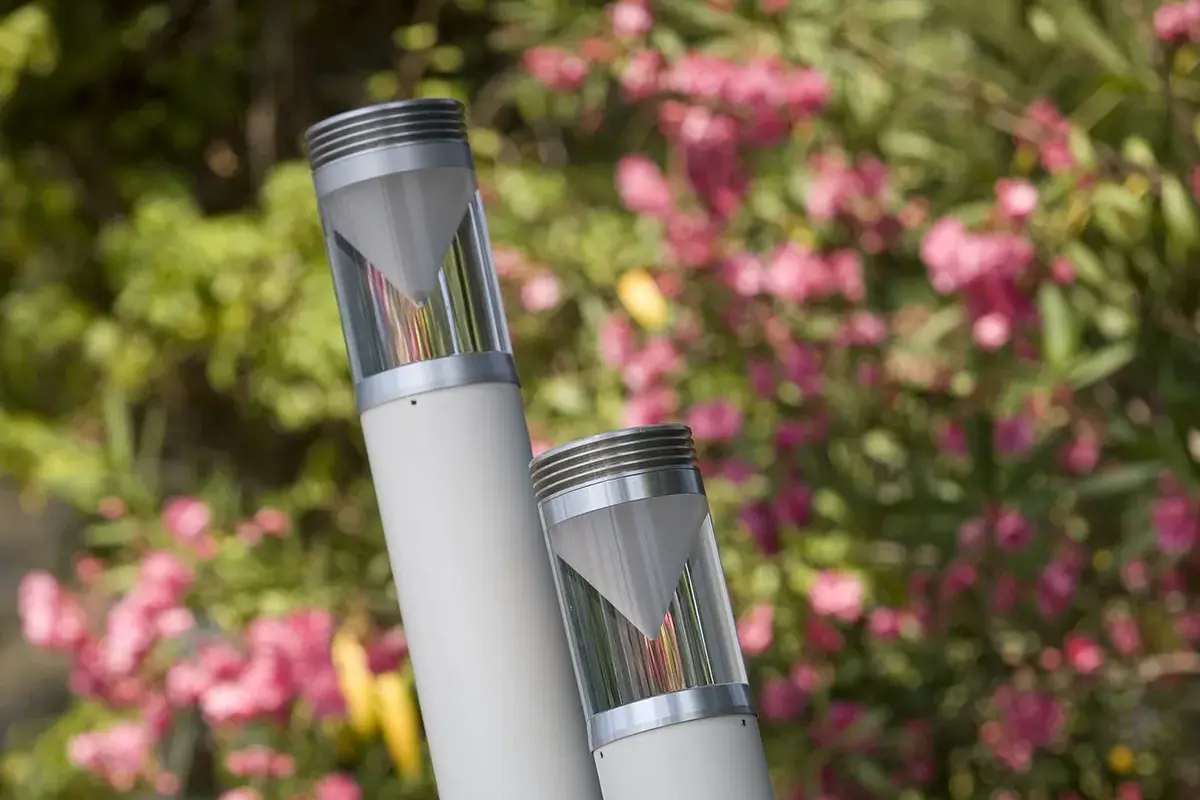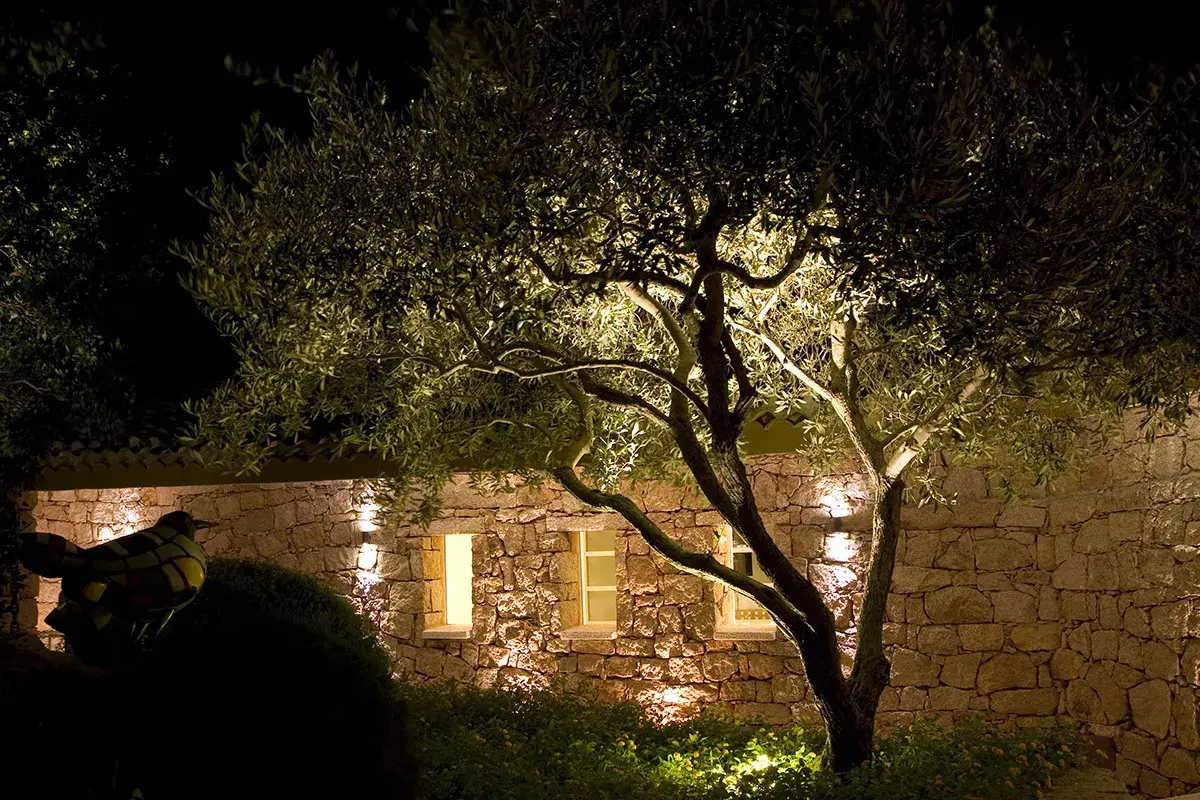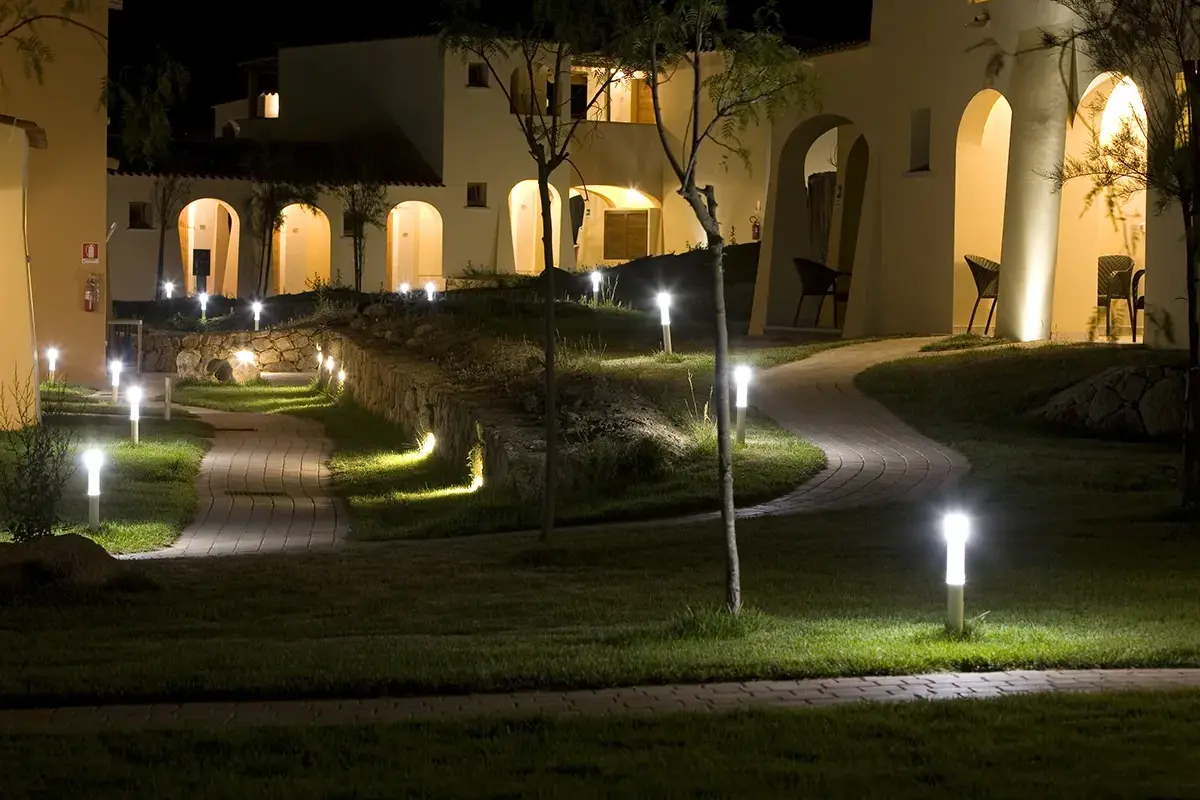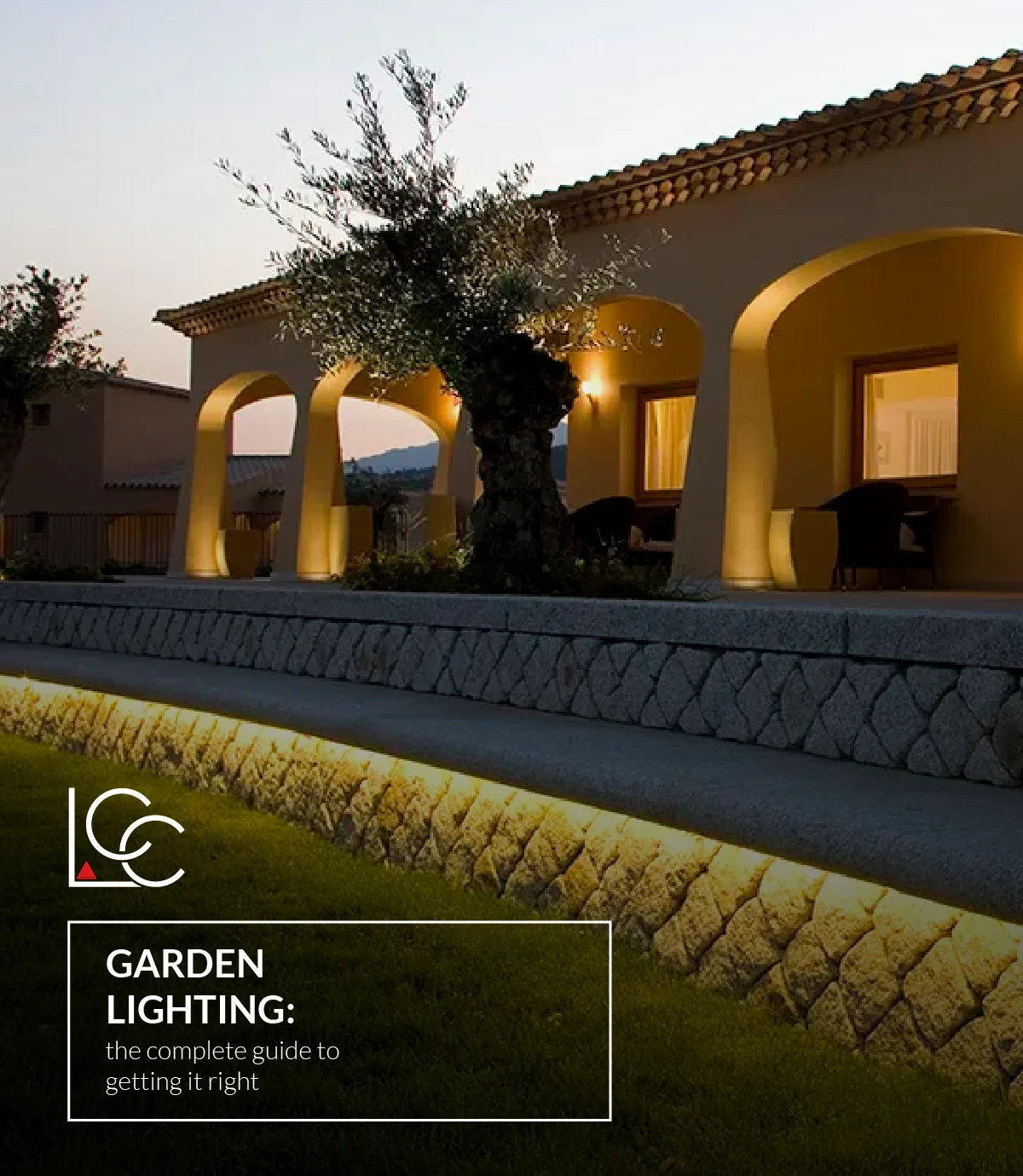Garden Lighting: why it matters
Garden lighting is first and foremost an aesthetic choice. Proper lighting highlights plants, trees, and design elements, offering a true calling card for the home and making outdoor spaces pleasant and livable.
But it’s not just about aesthetics: garden lighting is also an investment in safety and comfort. A well-maintained, well-lit garden becomes usable in the evening too, turning into a natural extension of the home.
Light has the power to create unique atmospheres: warm tones encourage conviviality and relaxation, while cool tones enhance modern settings.
Another key aspect is safety. Paths, walkways, and stairs must be clearly visible to prevent accidents: step lights or bollard lamps ensure safe passage even at night.
Finally, a guiding principle in garden lighting is to hide the light source. This way, the light seems to come directly from plants or natural elements, creating a scenic effect where a tree or hedge appears to “glow” on its own.
Garden Lighting: key points to consider
Before installing any lamp, it is important to evaluate some fundamental aspects. Even a simple lighting design plan helps avoid mistakes and allows you to preview the result through simulations or layouts.
The main elements to consider are:
- Purpose of the light: safety, atmosphere, or highlighting a detail.
- Balanced distribution: avoiding areas that are too bright or too dark.
- Energy efficiency: solutions like LEDs and solar lamps reduce consumption while maintaining high performance.
- Light temperature: warm tones for pathways and social areas, neutral or cool tones for modern styles.
- Durability of materials: fixtures must withstand rain, wind, and temperature changes.
By focusing on these aspects, the garden will be functional, harmonious, and efficient.

Garden Lighting: types of solutions
When deciding how to light your garden, choosing the right sources is crucial. Each type of outdoor lamp has specific features and can contribute to a balanced project consistent with the overall style.

Lamp posts and garden bollards
These are among the most classic solutions. Installed along pathways or passages, they provide diffused, even light. Available in traditional or modern versions, they adapt to different styles and can also be used to illuminate green areas such as flowerbeds and plant groups.
Spotlights and step lights
Perfect for safety, they make paths, stairs, and flowerbed borders clearly visible. Some models are recessed into the ground or walls, while others are surface-mounted, offering versatility depending on the project. When positioned carefully, they can also emphasize architectural lines.

Outdoor wall lights (appliques)
Mounted on walls, fences, or verandas, they are ideal for entrances and relaxation areas. With a wide variety of designs, they can be harmonized with outdoor furniture. Many models include motion sensors or timers to enhance comfort and safety.
String lights and decorative lanterns
More scenic than functional, these are perfect for adding atmosphere and style. LED string lights and decorative lanterns bring intimacy and a warm touch to outdoor evenings.
Outdoor floodlights
Especially suitable for large gardens, they illuminate trees, statues, or facades, creating striking light-and-shadow effects. Often the fixtures are hidden, keeping the light source invisible so that the final effect looks elegant and natural.
Garden Lighting: conclusions
Garden lighting requires attention and a balance between aesthetics and functionality. With a tailored lighting design, any outdoor space can be transformed into a welcoming, safe, and atmospheric environment.
If you want to create the perfect lighting for your garden, rely on LuceControcorrente. We analyze your space and your needs to design a personalized project, supporting you throughout every stage: from planning to the choice and installation of fixtures.
